Time for more words about getting into Kill Team. And today, I’m going to talk about Injury Rolls in Kill Team. This is probably the biggest difference in systems between 40k and Kill Team, and since it’s not exactly intuitive, people have a LOT of trouble understanding it, and they make a lot of mistakes. So we’re just going to through it extremely slowly, bring up edge cases and weird rules interactions, and make sure that you’re hurting people as technically correctly as possible.
The Basics
An Injury Roll is a roll made after an enemy model has suffered damage. This means the following things have happened and the result is in the favor of the person trying to hurt them:
- Hitting – Success
- Wounding – Success
- Armor Save – Fail
- Determine Weapon Damage – Number exceeds remaining wounds of target
- Feel No Pain/Disgustingly Resilient – Fail
At this point, IF the model’s current wounds are reduced to 0, any further attacks made against that target by that model’s current weapon (sort of, it’s a bit weird, but we’ll get into that later) are discarded, and you make your Injury Roll.
The Injury Roll has the player who inflicted the wound roll a number of dice equal to the damage characteristic of the weapon that inflicted the wound. These results then get fed through a modifier which goes as follows:
- Is the target obscured from the point of view of the model that inflicted the wound and within 1″ of a terrain feature or model that is between them and the firing model? If Yes, deduct 1 from the result.
Note: Thanks Krakoht on Reddit for noticing the error here - Does the target have any flesh wounds? If Yes, add 1 to the result for each flesh wound they have.
At this point, you apply only the highest result based on the modified results of the dice. If this number is 4 or higher, the enemy model is out of action and is removed from the game, otherwise they suffer a flesh wound and their Wounds count is set to 1. If a model already has 3 flesh wounds and this would give them a fourth, they also count as out of action.
Note – An Injury Roll cannot inflict more than a single flesh wound.
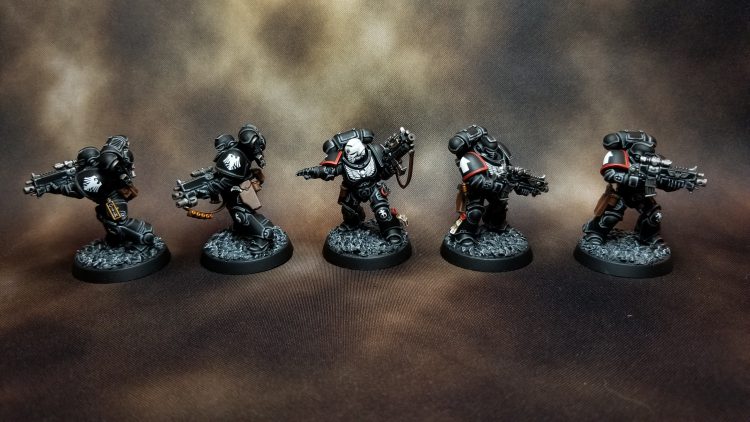
Example 1 – Guardsman A shoots Guardsman B with a lasgun (1 shot, S3, AP0, D1), Guardsman B is obscured. Assume the weapon hits, wounds and Guardsman B fails their armour save. The lasgun deals 1 damage, reducing Guardsman B to 0 wounds. The player controlling Guardsman A then rolls a single dice (because the damage of the lasgun is 1), the result of this dice has a -1 modifier, which means, based on the number shown on the dice:
- 1, 2, 3 and 4 – Guardsman B suffers a flesh wound, and their wounds count is reset to 1. Put a token near them to indicate they’ve suffered a flesh wound.
- 5 and 6 – Guardsman B is out of action, remove them as a casualty.
Example 2 – Assume Guardsman B shoots Guardsman A first. However, Guardsman A is not obscured. They also hit, wound and get through the armor save, using their own lasgun . The player controlling Guardsman B rolls a single dice for the Injury roll, however, there is no modifier, the result of this roll is as follows.
- 1, 2 and 3 – Guardsman A suffers a flesh wound, and their wounds count is reset to 1. Put a token near them to indicate they’ve suffered a flesh wound.
- 4, 5 and 6 – Guardsman A is out of action, remove them as a casualty.
Example 3 – Guardsman C decides to shoot Guardsman A now. Guardsman A is not obscured, and has suffered 2 flesh wounds already. Guardsman C is armed with a plasma gun and is in Rapid Fire range, they choose to Overcharge (2 shots, S8 AP-3, D2) and put both shots Guardsman A. The first shot hits, wounds and gets through the armour save, reducing Guardsman B to 0 wounds. At this point, the other shot is discarded and will not be resolved at all, and the player controlling Guardsman C rolls 2 dice, the results of these dice have a +2 modifier, which means, based on the numbers shown on the dice:
- Dice 1: 1 and Dice 2: 1 – Guardsman A suffers a single flesh wound and places another flesh wound counter there. Their wound count is raised to 1. The player controlling Guardsman C burns their dice.
- Dice 1: 1 and Dice 2: 2, 3, 4, 5 or 6 – The highest number is taken, which means the 1 is removed and Guardsman A is out of action, and is removed as a casualty.
- Dice 1: 2, 3, 4, 5 and 6 and Dice 2: 2, 3, 4, 5 and 6 – The highest number is taken, if there is a draw, either one is taken. Guardsman A is out of action.
Reanimation Protocols – Necrons have something called Reanimation Protocols, which means that if the result of the Injury Roll against them is an unmodified roll of a 6, then the model doesn’t go out of action and instead returns to 1 wound remaining with no flesh wounds.
The following table helpfully illustrates your chances of success with the various modifiers available and the potential damage inflicted:
| Chance of an Out of Action Result in an Injury Roll | ||||||
| Modifier | Damage | |||||
| 1 | 2 | 3 | 4 | 5 | 6 | |
| -1 | 33.30% | 55.60% | 70.40% | 80.20% | 86.80% | 91.20% |
| 0 | 50.00% | 75.00% | 87.50% | 93.80% | 96.90% | 98.40% |
| 1 | 66.70% | 88.90% | 96.30% | 98.80% | 99.60% | 99.90% |
| 2 | 83.30% | 97.20% | 99.50% | 99.90% | 99.90% | 99.90% |
So that’s the basics of Injury Rolls, now we’re going to go through each phase of dealing damage and point out strange edge cases and things that modify the Injury Roll and reason through them.
Multiple Weapons
It’s important to note that there’s a different order of operations in place for melee combat and ranged combat, and this impacts what exactly Injury Rolls do to the rest of your attacks.
Firstly, from the errata:
If a model’s wounds are reduced to 0, any attacks still allocated to this model are not resolved, and then the player controlling the attacking model makes an Injury roll for the target model.
This is a change from the rulebook where it was attacks with a specific weapon were not resolved, and it impacts how attacks with multiple weapons work and how many flesh wounds you can do.
Ranged Combat
- Choose Weapon and/or Profile
- Determine Shots
- Choose Target (This is when you allocate attacks to a model)
- Shoot Target
Once step 4 is resolved (whether due to an Injury roll) or because all shots have been fired, you can then go to step 1 and use a different weapon, either against the same target (to wound them again), or a new target.
Example – An Eldar Dire Avenger Exarch is armed with 2 Avenger Shuriken Catapults (2 shots S4, AP0, D1), nearby is an Ork Boy (1 wound) they want to shoot. Let’s go through this step by step.
1. Choose Weapon – The Dire Avenger Exarch selects their first Avenger Shuriken Catapult.
2. Determine Shots – An Avenger Shuriken Catapult has 2 shots. If this was a weapon with a variable number of shots, this is when you’d roll to see how many shots you get.
3. Choose Target – There is only one Ork Boy in range, the Eldar player shoots the Ork Boy with both shots.
4. Shoot Target – The first of two shots hits, wounds and gets through the armour save, this reduces the Ork Boy to 0 wounds.
If the model had more than 1 wound, you’d go back to the start of step 4 and shoot them again, but they don’t, so Step 4 doesn’t occur again.
If the Eldar player was shooting more than 1 model (by splitting their shots between two models), they would make the Injury Roll against the Ork Boy, and then resolve Step 4 against the other model they were shooting, but this is also not the case.
This means the Eldar player goes back to step 1 (on the Dire Avenger Exarch) after the Injury Roll is rolled.
The Eldar player rolls a 3, which causes a Flesh Wound on the Ork Boy.
At this point, they go through Steps 1-3 again. They select the second Avenger Shuriken Catapult, which still has 2 shots, and shoot at the same Ork Boy. The second shot succeeds and they roll a 4 for the Injury Roll, putting the Ork Boy out of action.
Melee Combat
- Select Target(s) (This is when you allocate attacks to a model)
- Select Weapon
- Attack Target
Once step 3 is resolved (whether due to an injury roll), or all the attacks against that target running out, the attacking model then moves to attack any other models it allocated attacks to. This means that you can’t double dip by declaring an attack on one target with two different weapons, the order of operations and GW’s errata doesn’t support this.
Example 1 – A Khorne Berserker (3 attacks) armed with a Chainaxe (S5, AP-1, D1) and a Chainsword (S4, AP0, D1) charges a Tactical Marine. The Khorne Beserker is selected in the Fight Phase to Fight.
1. Select Target – Only the Tactical Marine is in range, the Khorne Beserker chooses to attack that model. They put all their attacks into the Tactical Marine.
2. Select Weapon – The Khorne Beserker chooses to use the Chainaxe for the three attacks main attacks, and then the Chainsword’s bonus attack afterwards
3. Attack Target – The first attack chainaxe misses, and the second attack hits, wounds and gets through the armour save.This reduces the Marine to 0 wounds. At this point, all remaining attacks allocated to that model are not resolved, this includes the third Chainaxe attack and the Chainsword attack. They are all discarded, and the Chaos player makes an Injury Roll, they roll a 2, inflicting a Flesh Wound on the Tactical Marine, and their Fight Phase ends.
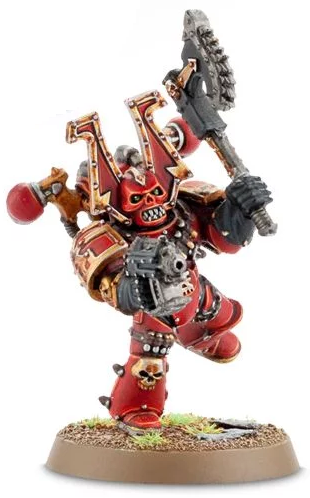
Example 2 – A Combat Specialist Tyranid Lictor (4 attacks) armed with Grasping Talons (S6, AP-1, D2) and Rending Claws (S6, AP-1 (-4 on a wound roll of 6), D1) charges 2 Guardsmen. The Tyranid Lictor is selected in the Fight Phase to Fight.
1. Select Targets – The Tyranid Lictor choose to allocate 2 attacks each into each Guardsman (now called A and B).
2. Select Weapon – The Tyranid player chooses to use 1 attack with the Talons, and 1 with the Claws against Guardsman A.
3. Attack Target – The Talons attack hits, wounds and gets through Guardsman A’s armour save, reducing them to 0 wounds. At this point, the remaining attack against that model is not resolved, meaning they won’t be hit with the Rending Claws. The Lictor player makes an Injury Roll for Guardsman A, rolling 2 dice, since it is a 2 damage weapon. They roll a 5 and a 3, putting Guardsman A out of action. At this point, they go to Step 2, this time against Guardsman B.
2. Select Weapon – The Tyranid player chooses to use the same weapon allocation as before, this time against Guardsman B
3. Attack Target – Once again, the Talons hit, wound and get through the save. Guardsman B is reduced to 0 wounds. The Claws attack is discarded. The Tyranid player makes an Injury Roll, getting a 1 and a 3, inflicting a Flesh Wound on the Guardsman, and their Fight Phase now ends.
Psychic Phase / Mortal Wounds
Psybolt has the ability to do 1 or D3 mortal wounds. Mortal wounds are applied sequentially, one at a time. As soon as a mortal wound reduces a model’s wounds to 0, all the other mortal wounds are discarded and you make an Injury Roll as normal.
Example – A Grey Knight has cast Psybolt on a Space Marine Intercessor (2 Wounds), it goes off and inflicts 3 mortal wounds. The second of these two mortal wounds reduces the Intercessor to 0 wounds. However, because each Mortal Wound counts as a separate instance of damage, the Grey Knight player only rolls a single dice for the Injury roll, with the same modifiers as normal (Flesh Wounds and Obscured).
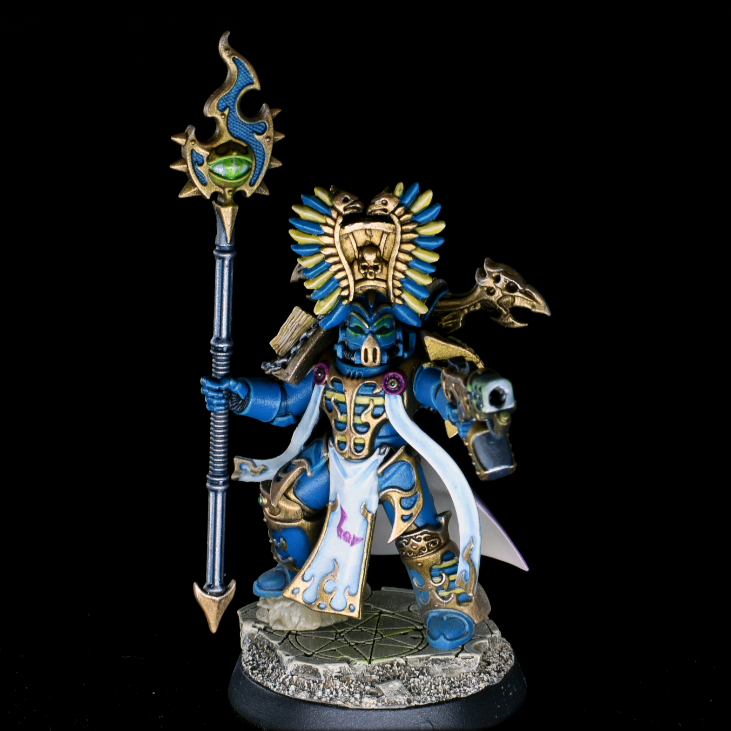
Rolling to Hit
Psyk-out Grenades – Grey Knights get a Grenade where if you score a 6 or more on the hit roll, and you’re targeting a Psyker or Daemon, they take a mortal wound instead of the normal damage. If the mortal wound reduces the target to 0 wounds, the Grey Knight player would roll a single dice for the Injury roll, with any relevant modifiers.
Kustom Mega-Blasta – Orks get a gun, where if they score a hit roll of 1, they suffer a mortal wound. In the case of self-inflicted wounds such as these, the Injury roll is made by the player who suffers the mortal wound. So the Ork player would roll the dice, and there would be no modifiers due to the target being obscured (I assume since you can’t be obscured from yourself), but there are modifiers for flesh wounds.
Rolling to Wound
Sniper Rifles
Sniper Rifles, on a wound roll of 6, inflict a mortal wound to their target. The timing of when this wound is suffered has been clarified in the Designers’ Commentary to be immediately after the dice for the wound roll is rolled. If this mortal wound reduces the target’s wounds to 0, then you follow the rules for making an Injury Roll as if the target suffered a mortal wound. This means you roll a single injury dice.
Example – An Eldar Ranger shoots a Fire Warrior with their Ranger Long Rifle (S4, AP0, D1). The Fire Warrior is not obscured. When they roll to wound, they score a 6. This instantly inflicts a mortal wound on the Fire Warrior, reducing their wound count to 0. At this point, the Eldar player makes an Injury Roll, with the standard modifiers for flesh wounds and being obscured.
Note – Certain Sniper Rifles such as the Rail Rifle and the Transuranic Arquebus have a damage characteristic greater than 1. If you roll a 6+ for the wound roll, and inflict the mortal wound and said mortal wound reduces their wounds to 0, you do not roll for your damage and roll that many injury dice, you roll a single dice, since the mortal wound resolves first. However, if the model has multiple wounds, the mortal wound is resolved (lowering their wound count), and then the shot is resolved as normal.
Example 1 – A Tau Pathfinder armed with a Rail Rifle (S6, AP-4, D3 Damage), shoots a Guardsman. The Guardsman is not obscured. The Tau player hits, and then rolls a 6 to wound. This causes the Guardsman to take a mortal wound, reducing their wounds to 0. This then immediately ends the shooting phase for that weapon, and the Tau player rolls a single dice for their Injury Roll, since it was caused by a mortal wound, with the standard rules applying.
Example 2 – A Tau Pathfinder armed with a Rail Rifle (S6, AP-4, D3 Damage), shoots a Guardsman. The Guardsman is not obscured. The Tau player hits, and successfully wounds (but does not roll a 6), the Tau player then rolls for damage, rolling a D3. They roll and the result is a 3 (usually rolled as a 5 or 6 on a D6), raising the damage characteristic of the weapon to 3, and dealing 3 wounds to the Guardsman, reducing their wounds to 0. The Tau player then makes an Injury Roll, rolling 3 dice and picking the highest, with the standard modifier.
This also means that, if you’re fighting single wound models, you pretty much should not combine the Sniper Specialism Deadeye with a Sniper Rifle. Ever.
Determine Damage
If, prior to this point, you’ve been fast rolling your dice, this is where you need to stop. The rolls here need to be done one at a time for reasons that should hopefully become clear.
If a model is shot by multiple shots of a weapon that does a variable amount of damage, each damage roll needs to be done separately. The first result that reduces the targeted model’s wound count to 0 is the one that will be used for the amount of injury dice rolled. Anything before or after is disregarded. Naturally, this makes rolling multiple dice at the same a bad idea, since you won’t know which result to pick.
Example 1 – An Eldar Starcannon (2 Shots, S6, AP-3, D3 damage) shoots a Tactical Marine. The Eldar player decides to use Fast Dice Rolling. Both shots hit, wound and get through the armour save. At this point, even though there are two damage rolls, they actually count as separate attacks. So the Eldar player rolls a single D3 to determine damage and the result is a 2 (usually a roll of 3 or 4 on a D6), meaning 2 damage, this reduces the Tactical Marine to 0 wounds and the Eldar player makes an Injury Roll, using 2 dice
Example 2 – An Eldar Starcannon (same profile as in example 1) shoots a Tyranid Lictor. Once again, the Eldar player uses Fast Dice Rolling. Both shots hit, wound and get through the armour save. A Tyranid Lictor has 4 wounds, which means both dice will need to be rolled for damage. The first dice is rolled, resulting in a 3 (usually represented as a roll of a 5 or 6 on a D6), meaning 3 wounds are dealt to the Lictor, the second D3 is then rolled, resulting in a 1. This attack reduces the Lictor to 0 wounds, meaning that the Eldar player rolls a single dice for the Injury Roll.
If the results here were swapped (1 first, and then 3), then the Eldar player would roll 3 dice for their injury roll, which would be a vast improvement for them.
Savior Protocols
The most recent Kill Team Errata has slotted Savior Protocols into when the model would lose wounds, as opposed to before it; this means it comes into our order of operations it in after the armor save roll and the calculate damage roll (if applicable). What this does is basically convert that entire attack into a single mortal wound, to be suffered by a nearby Drone (the Drone has to be within 3 inches of the model being wounded). After any relevant rolls (such as anything to ignore wounds), the Tau player would then roll an injury roll for the Drone. Regardless of what happens to the Drone, any attacks still allocated to the original model would resolve until the original model’s wound count hits 0 and an Injury Roll is made.
Example – A Grey Knight Gunner shoots a Tau Fire Warrior with a Psilencer (6 shots, S4, AP-0, D3 Damage). There are 2 Drones within 3 inches of the Fire Warrior. Drone A is a Shield Drone (ignores wounds on a 5+), Drone B is a Gun Drone. The Grey Knight manages to hit and wound with all 6 attacks, and the Tau player fails all six saves, leaving them with 6 attacks to deal with. The Grey Knight has to roll damage one dice at a time, allowing the Tau player to react accordingly. The result of the damage roll is in parentheses next to the attack.
- Attack 1 (3) – The Tau player passes these wounds onto Drone 1, the Drone suffers a single mortal wound. The Tau player rolls a dice to ignore the mortal wound on a 5+, it succeeds, meaning the Drone suffers no damage.
- Attack 2 (3) – The Tau player passes these wounds onto Drone 1, the Drone suffers a single mortal wound, the Tau player fails the ignore damage roll and thus has to make an Injury roll (single dice). They get a 3, meaning the Drone suffers a flesh wound.
- Attack 3 (2) – The Tau player passes these wounds onto Drone 2, the Drone suffers a mortal wound and the Tau player makes an Injury Roll (single dice). They roll a 1, meaning this Drone also suffers a Flesh wound.
- Attack 4 (3) – The Tau player passes these wounds onto Drone 1, the Drone suffers another mortal wound, the Tau player fails the ignore wound roll and has to make an Injury Roll (single dice). They get another 3, but due to the Flesh wound modifier, the Drone is now out of action.
- Attack 5 (1) – The Tau player decides to take this wound on the Fire Warrior, reducing them to 0 wounds. The Grey Knight player then makes an Injury Roll, rolling a 2. The Fire Warrior suffers a single flesh wound.
Since the original target has been reduced to 0 wounds, Attack 6 is not resolved.
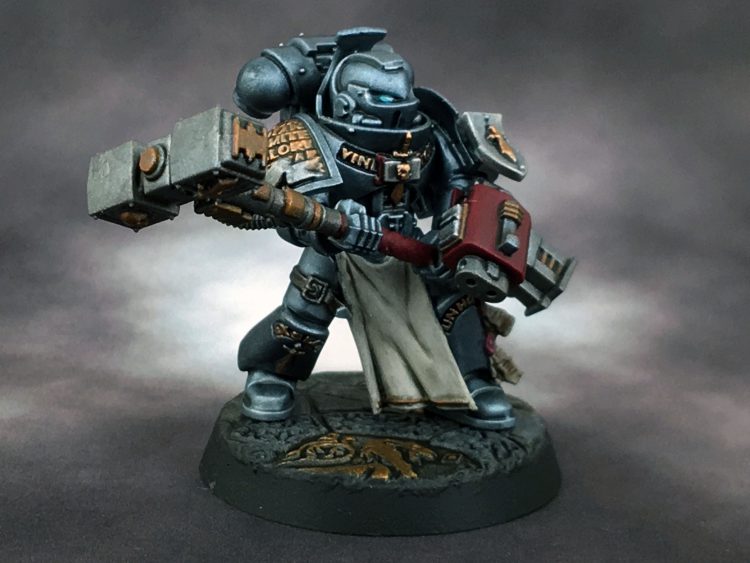
Ignoring Damage
Quite a few units in Kill Team have the ability to ignore wounds suffered if they roll above a certain number on a dice. If they manage to ignore enough wounds to not reduce their wound count to 0, then any other attacks on that target, from that weapon/model will be resolved in the same way until either their wound count hits 0 or the attacks run out. At that point, an injury roll would be made using the damage characteristic of the weapon to determine the number of dice rolled, you do not base it on the amount of wounds suffered by the model.
Example – A Harlequin Player armed with a Harlequin’s Kiss (S4, AP-1, D3 Damage) is attacking a Death Guard Plague Marine (Ignores Wounds on a 5+). The Harlequin Player has 4 attacks. Two of these manage to hit, wound and get through the Plague Marine’s armour save. The Harlequin Player’s player rolls 1 damage for the first attack, this wound is blocked by the Plague Marine’s Disgustingly Resilient ability. The Harlequin Player’s player then rolls 3 damage for the next attack. One of these wounds is blocked, and 2 get through, reducing the Plague Marine to 0 wounds. The Harlequin Player’s player then rolls 3 dice for the Injury Roll, since that was the damage characteristic of the attack that reduced the Plague Marine to 0 wounds.
Forge World Graia
Note: Rules As Written, this ability is actually completely messed up, there’s two possible interpretations you can go for here, and you and your opponent will probably want to work out before the game which one you want to go for.
Forge World Graia has the ability, after a model loses their last remaining wound, to then restore themselves to 1 wound remaining. Due to the order of operations in Kill Team, this means that you essentially go to the Injury Roll step, but the attacking player doesn’t get to roll any dice for said Injury roll. This means that all extra attacks are also cancelled.
Example – A Deathwatch Veteran Gunner armed with a Frag Cannon shoots a Frag Round (2D6 shots, S6, AP-1 1 Damage) at a Graia Skitarii Ranger. They roll 8 shots, 6 wound and 5 get through the armour save. At this point, the first attack reduces the Ranger to 0 wounds, which means the other attacks are discarded. However, the Ad Mech player rolls a dice and gets a 6, raising the Ranger’s wounds back up to 1, preventing the Injury roll from occurring.
Alternate Interpretation: Rules As Written, an Injury Roll is made when a model hits 0 wounds, it doesn’t matter if the model goes back up to 1 wound. The Injury Roll is made regardless, which means that this part of their Forge World Dogma is completely useless. You’d go up to 1 wound, suffer an injury roll, and then either suffer a flesh wound…which puts you on 1 wound. Or you just get put Out of Action, which kills you anyway.
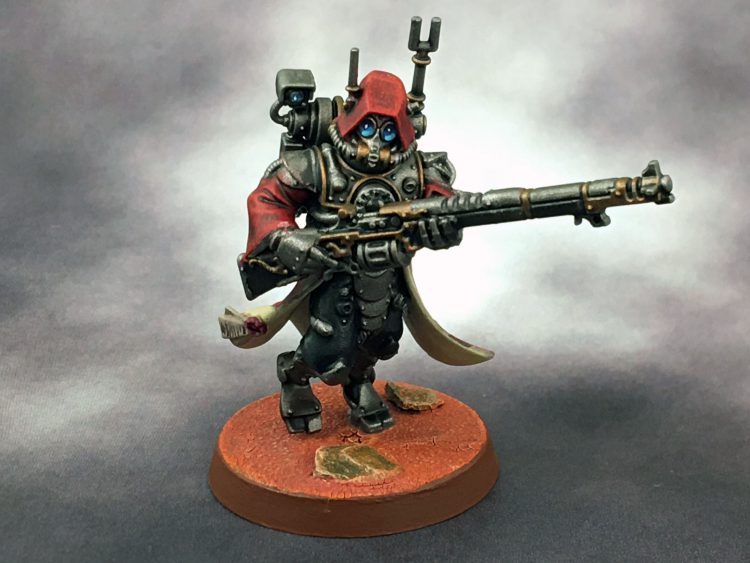
Conclusion
That’s all we have time for on the subject of injury rolls. Hopefully this guide is comprehensive and helps you to understand the mechanic better – for such a core part of the system, it’s surprisingly finicky. As ever, if you think we’ve missed anything, or got anything wrong, then hit us up at contact@goonhammer.com or over on our Facebook Page, and we’ll do our best to respond.
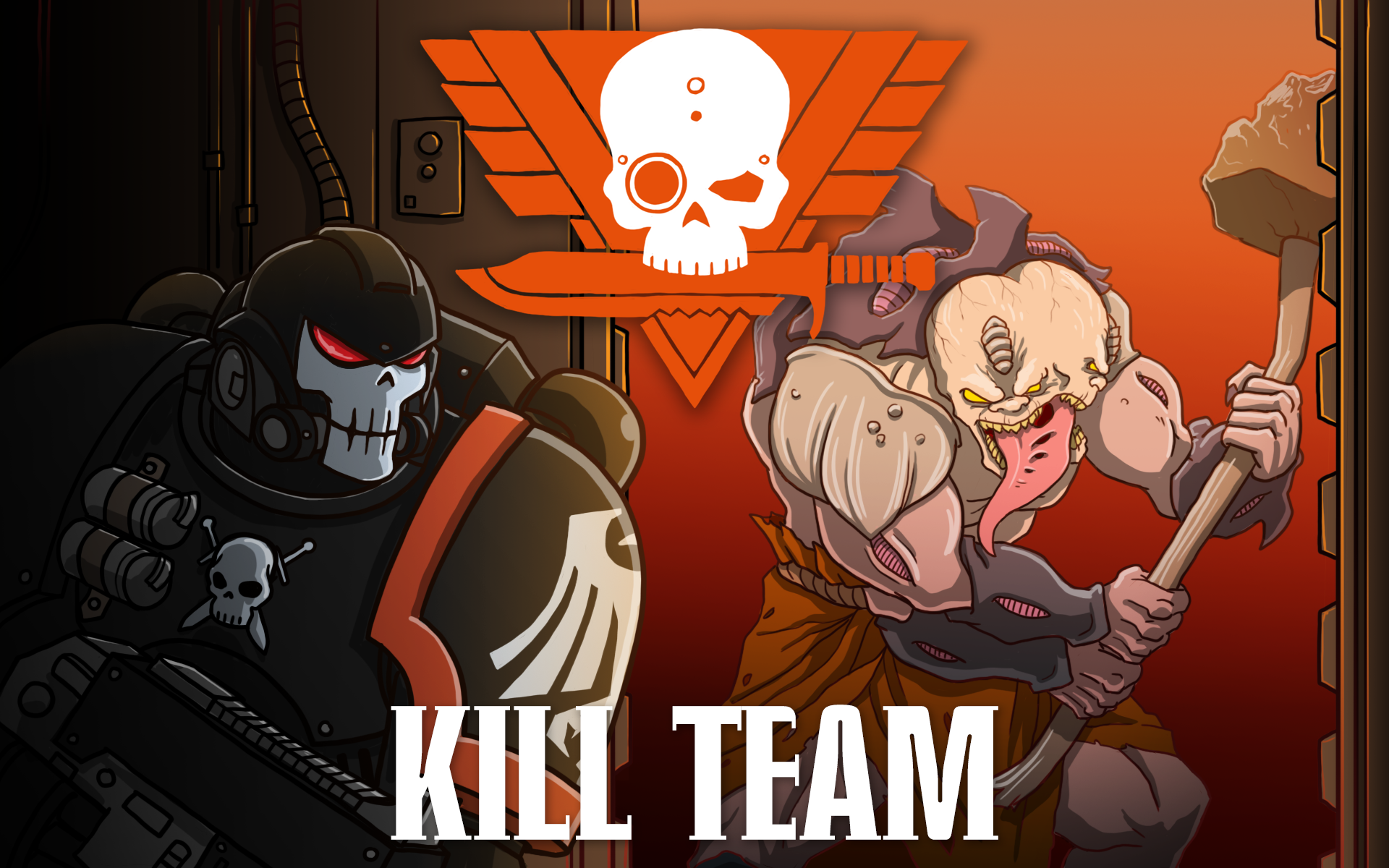


You must be logged in to post a comment.